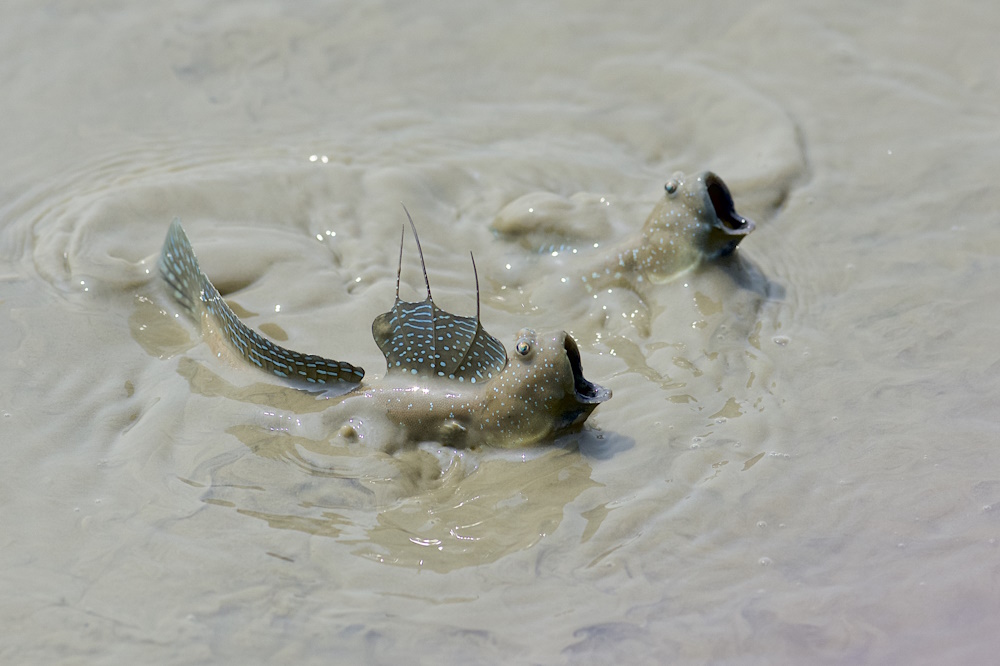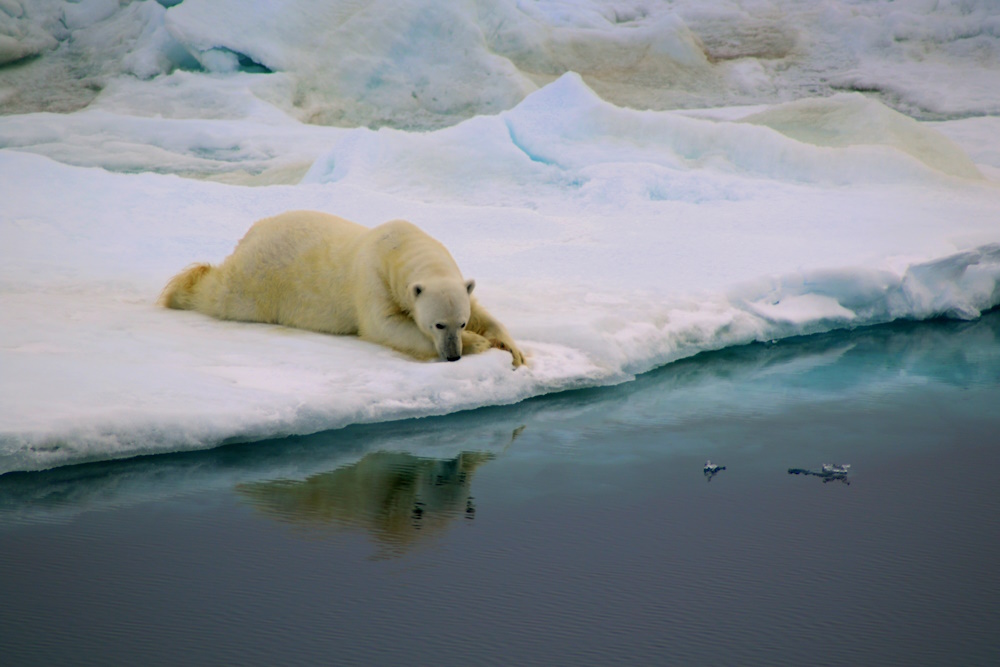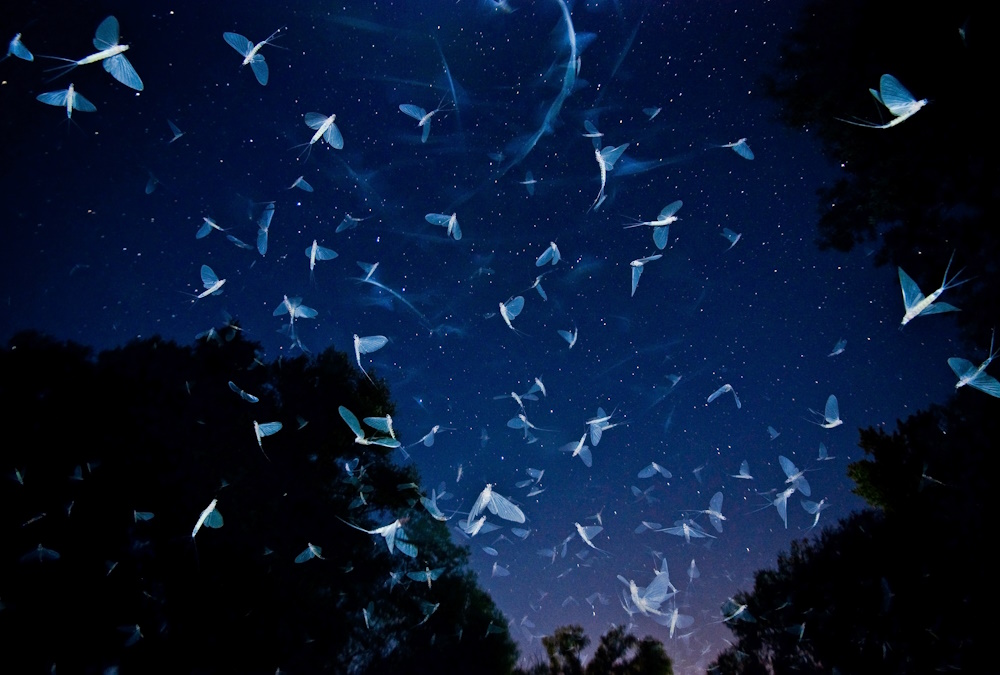Behaviour 2018
Shortlisted entries in the Behaviour category from the 2018 Royal Society Publishing Photography Competition.
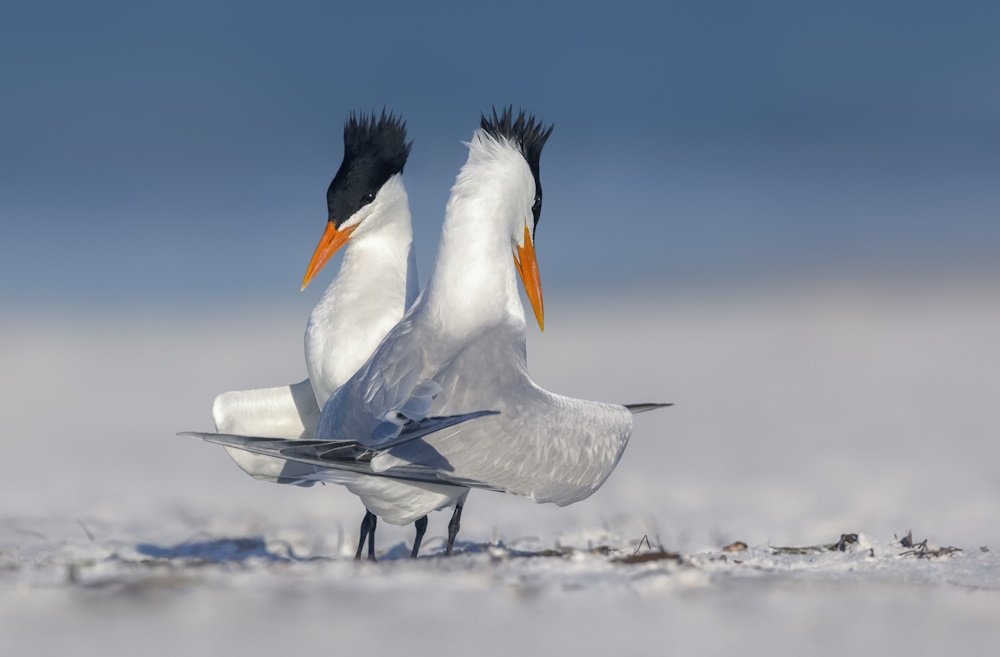
Behaviour Winner 'Courting Royals: two Royal Terns in courtship display' by Kristian Bell. 'Another beautiful morning on a beautiful beach on the Gulf Coast of Florida seemed to prompt these two Royal Terns to commence an intricate courtship dance. Just out of shot are another 20 or so terns sitting idly by and watching the loved-up pair in action. Photo taken with a Canon 300mm lens and 2x extender. Clean-up (mostly of some background clutter in waves), cropping, setting of white balance, selective noise reduction in the shadows, small dodging/burning and tonal corrections.'
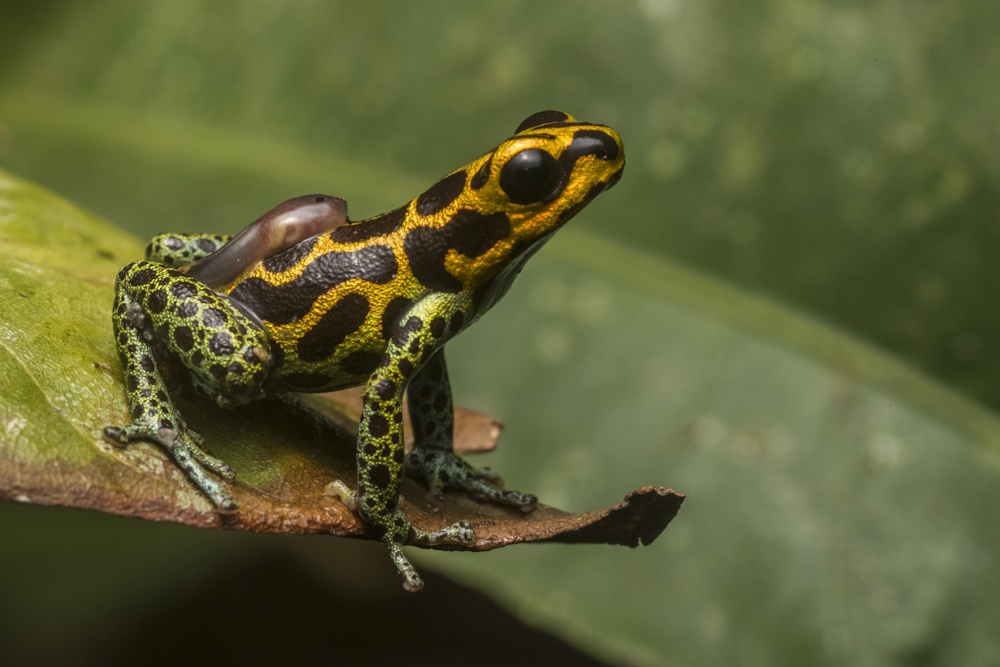
Behaviour Runner up 'Baby on Board' by Anton Sorokin. 'Parental care is a behavior typically associated with birds and mammals, it is comparatively rare in other taxa such as amphibians. However some amphibians are very devoted parents, the poison frogs (Dendrobatidae) are a great example. This species is the mimic poison frog (Ranitomeya imitator), which exhibits obligate biparental care. Here, the male transports the tadpole on his back, he will soon deposit it in a small pool of water. Afterwards, he will check back and when the tadpole signals hunger, the male fetch the female who will lay an unfertilized egg for the tadpole to eat in a behavior called trophic egg feeding. This will continue until the tadpole metamorphoses into a froglet. This high level of parental care means that the parent frogs must both be wholly invested in raising their offspring, which may be why this is currently the only species of frog known to be genetically monogamous. Nikon D810 with a 105 mm Nikkor lens and an additional SB 800 flash unit. Image was slightly cropped for composition and had slight color and levels adjustments.'
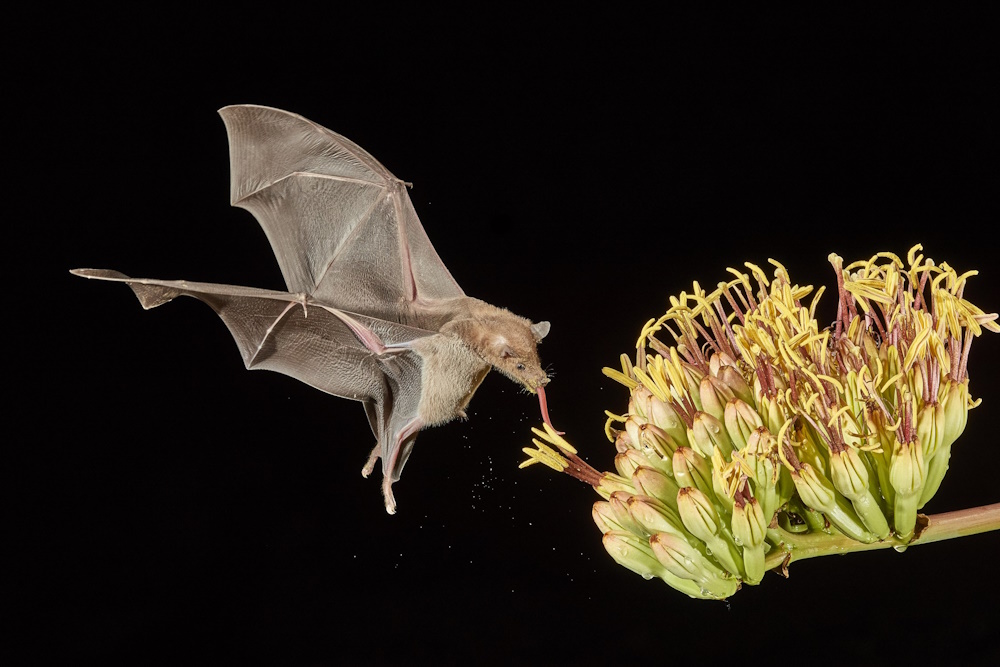
Behaviour Honourable mention 'Plant trees and stop disease emergence' by Peter J Hudson FRS. 'In recent years, bats have appeared as disease reservoirs of significant emerging diseases, such as Ebola, Hendra, Nipah, SARS and Middle East Respiratory Syndrome. The pressing issue we face in protecting people and livestock from these novel infections, is why does spillover (the passage of a virus from wildlife to humans) occur and why is it increasing? We have been studying Hendra virus on the east coast of Australia where the virus passes from flying foxes to horses and then to humans who suffer a 60% case fatality rate. Our recent work is now showing that spillover occurs in winter when the winter flowering eucalyptus trees fail to produce nectar, and this situation has been exacerbated by deforestation. In these harsh conditions, the starving bats move away from their traditional camps and seek fruit trees planted in horse paddocks where they infect the horses. There has been much controversy in Australia with attempts to burn down bat roosts and kill the bats. From our research it would appear the solution is to rewild parts of Australia by planting 5 species of tree at specific locations so the bats do not starve and spillover will cease. This will also retain bats and the integrity of the ecosystem. If we extrapolate out our hypothesis then we may obtain a deeper understanding of how Ebola and other infections emerge following deforestation in west Africa, often associated with palm oil plantations. Plant trees and protect people from disease. This photograph was taken with a Canon 1DXmk2 and an EF 100-400mm f4 II lens set to 176mm. Taken at 1/200s, f20, ISO 400. Additional equipment included an infra red trigger with 2, flash set at Manual 1/16th power.'
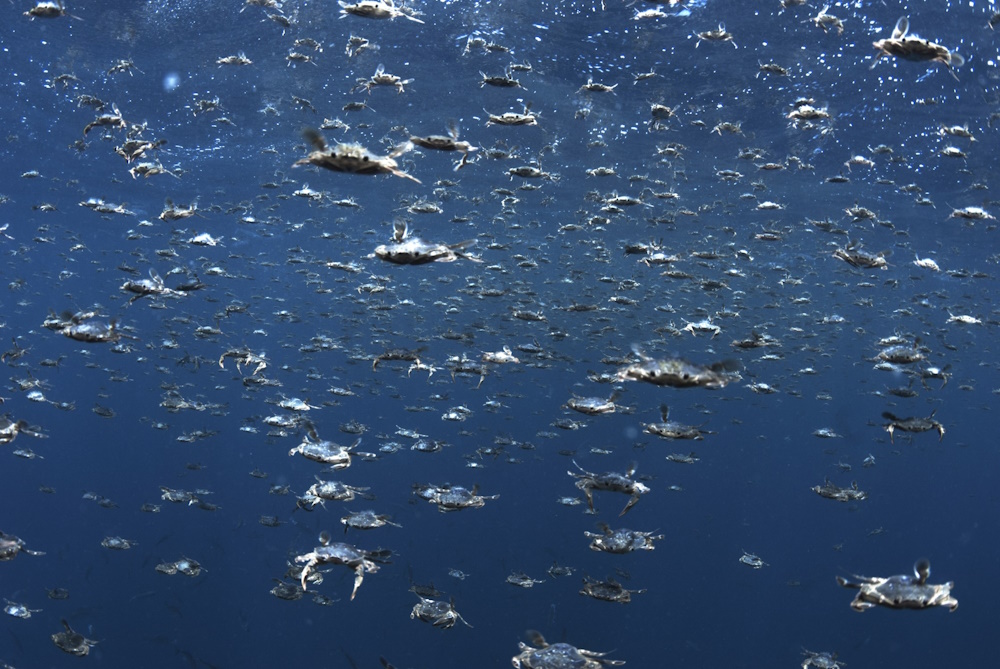
Behaviour Honourable mention 'Space invaders' by Nuno Rodrigues. 'The Henslow's swimming crab, Polybius henslowii, can form dense groups of several individuals near the sea surface, especially during the summer season. This species used to be targeted by fishermen in the 19th century and used as a fertilizer in agriculture. The decline in their populations and the development of industrial fertilizers reduced fishing until it ceased in the 20th century. It is now an important prey for commercially important fish species like the sea bass, Dicentrarchus labrax, and the Gilthead, Sparus aurata, but also marine birds and dolphins. On a summer's morning of 2015 though, I observed something rare: the waters around Berlenga island, Portugal, were swamped with these animals, which extended as far as the eye could see. Luckily, I had my camera! I've been working in this region for many years, particularly trying to understand how a Marine Protected Area can affect the fish community composition. On this day I witnessed something totally new to me, which reminds me how little we still know about our ocean. The photo has been slightly processed by lowering colour temperature, increasing brightness and contrast and reducing saturation. Camera: Nikon D200 Lens: Tokina 10-17 mm Housing: Subal ND20 Strobes: 2 x Ikelite DS-125 strobes F-stop: f/8 Exposure time: 1/60 sec. ISO: 200 Focal length: 10 mm'
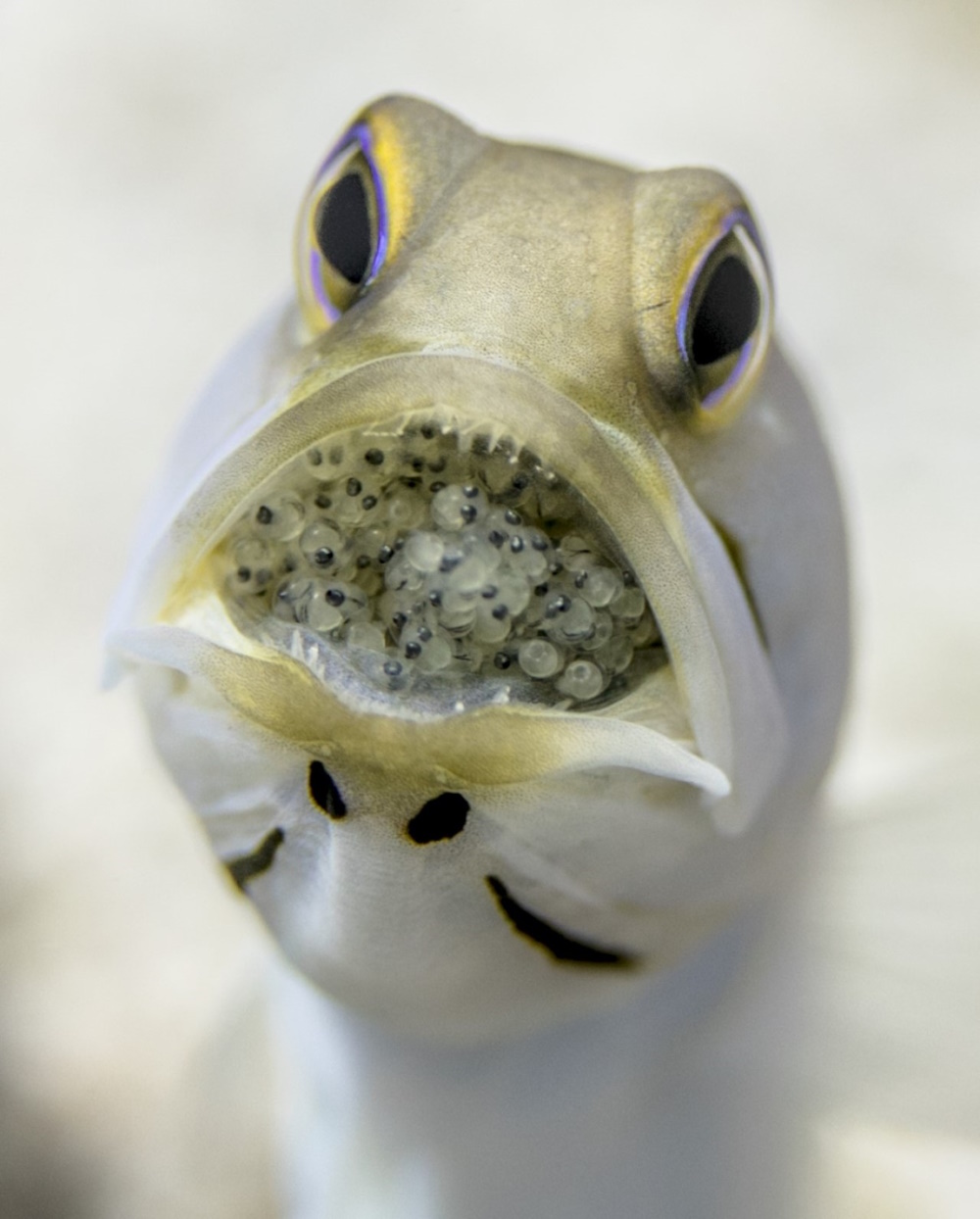
Behaviour Honourable mention 'Daddy Day Care' by Lindsey Dougherty. 'This yellow-headed jawfish (Opistognathus aurifrons) is a paternal mouthbrooder practicing buccal incubation. While teaching a marine biology course in Little Cayman, I spent about 15 minutes of the dive underwater at a depth of 45' trying to get close enough to get this shot (while not scaring him back into his burrow). My goal was to capture an image of the eggs that are developing within his mouth, so I was thrilled when I was able to capture the eggs' eyespots. I watched him move the eggs around to aerate them with oxygenated water. These jawfish only grow up to 10cm, and it is relatively rare to find one with eggs, so I was quite happy to be able to witness this amazing feat. What a good dad! Camera: Canon 5D Mark IV Lens: Canon 100mm Macro Settings: ISO 100, f/4.0, 1/200 sec Housing: Ikelite Underwater Housing and Strobes Post-Processing: Clarity, Decrease Shadows, Increase Blacks'
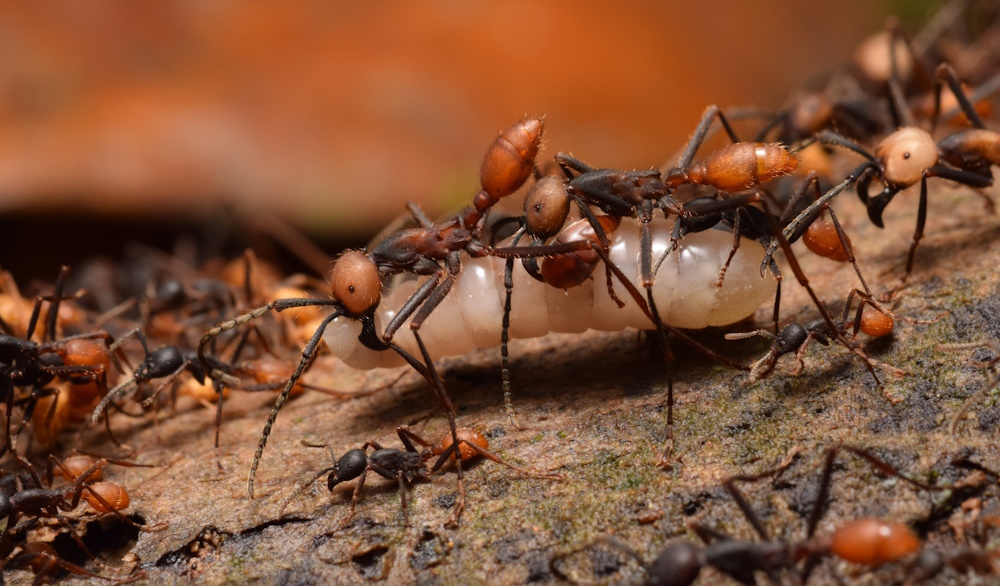
Behaviour Honourable mention 'Army Ant Intruder' by Philipp Hoenle. 'This picture was taken during an army ant (Eciton burchellii) nest migration. Army ants have a nomadic lifestyle, and change their nest position frequently. This allows an outside observer to get a unique view of all that is found within the colony. Army ants rely on colony fission to reproduce, and just before they split their nest, they raise broods of males and queens instead of workers. The sexual brood can be distinguished from normal worker brood by it's uniform large size in the later developmental stages. Shown in the picture is such a sexual larva. It's hard to find nests that are in this reproductive stage, and in this case I spent 2 months searching in the Ecuadorian rainforest until I stumbled upon it. Army ants colonies contain a big variety of associated organisms, such as beetles, flies and silverfish. This is because the nest is a secure shelter with an abundance of food. The beetle on the larva (Cephaloplectus mus) is such an army ant parasite. It does not get attacked because it is chemically camouflaged, it essentially has the same colony odor as the army ants. During colony migration, it needs to find a way to follow the ants to their new nest. This individual choose to sit on the larva, and is getting directly transported to the new spot. Post-processing involved cropping. Technical details: Image was taken with a Nikon D5300 with a Laowa 60 mm f2.8 lens.'

